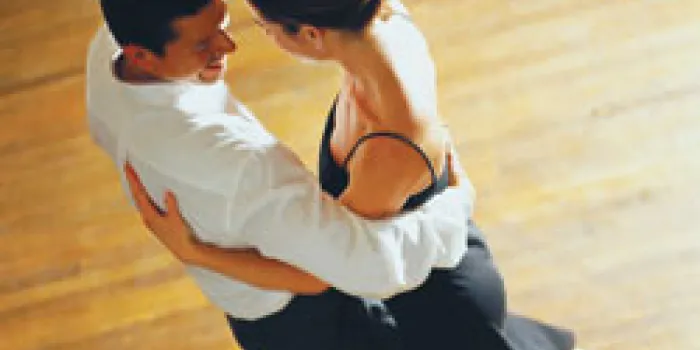For Lilliam Bervis, fun and fitness have become perfect partners. Bervis, 24, of Miami, has been salsa dancing for nearly 10 years—at clubs, in the classroom and competitively. “I dance in groups, exchanging partners, or just one-on-one,” she says. She hits the dance floor once or twice a week.
Bervis, who has type 1 von Willebrand disease, first cut the rug when she was a teenager. While attending her best friend’s quinceañera, a traditional Latino celebration of a girl’s milestone 15th birthday, she got swept up by salsa, a Cuban dance import. She liked it so much that she took lessons. Eventually, Bervis began competing at nightclubs and even taught dance for a while.
Fun is key to sticking with any exercise program, says certified personal trainer and yoga instructor Beth Passehl, MS, CPT, RYT. “To really benefit from any physical activity, there has to be some long-term commitment and consistency,” she says. Passehl is program coordinator of the Healthy Behavior Team at Children’s Healthcare of Atlanta.
[Steps for Living: Exercise and Activity Options]
Dancing, says Passehl, is an ideal part of any program aimed at getting and staying in shape. Many people enjoy the simple movement of dance, but an added benefit is that you rarely dance alone. “All of us tend to be more committed to an activity when we have someone to pair up with,” Passehl says. “That kind of connection, which is physical, emotional and mental, creates more commitment the more you do it.” Passehl will discuss the benefits of dance, yoga and other physical activities at an educational session at the National Hemophilia Foundation’s (NHF’s) Annual Meeting in New Orleans, November 11–13.
Some of the benefits of dance are:
- It can help you shed pounds. Belly dancing burns as many calories as biking and swimming, while an hour of ballroom dancing equals an hour’s brisk walk, according to the Mayo Clinic.
- It can increase your endurance and energy levels, improve your strength and coordination, and tone your muscles. “Most dance is a good aerobic, cardiovascular workout,” says physical therapist Debra Voss, PT, ATC, CSCS, of the Hemophilia Center of Western Pennsylvania in Pittsburgh. “It also can help you improve your balance.
- Like other forms of moderate exercise, it can help lower your cholesterol and blood pressure, which are crucial to getting and staying healthy.
- It may also be good for your brain. According to a study in the June 19, 2003, New England Journal of Medicine, cutting the rug was the only form of exercise that offered protection against the onset of Alzheimer’s disease and other types of age-related dementia.
Take Precautions
Like any workout, dancing should be done carefully, especially if you are a beginner or are just starting to get in shape. According to the NHF guidebook Playing It Safe: Bleeding Disorders, Sports and Exercise, dance is a moderately risky activity. “Changes in direction as you dance can strain your ankles, especially if you have agility problems,” Voss says. “Ballroom dancing in high heels poses an increased risk for ankle injuries.”
Bervis has learned to be cautious when dancing. “Some salsa moves are complex, and if they are not done right, you can twist your ankle,” she says. “I’ve also been elbowed.” Bervis takes the time to warm up, even though she rarely sees other dancers doing it.
Some types of dance are best side-stepped. Voss discourages “crunking,” a high-intensity, high-impact, urban dance style. “One of the young men in our clinic with a bleeding disorder tried it, and he came in with a bleed,” she says. Steer clear of breakdancing, slam dancing and other full-contact styles. Bervis dodges modern dance because she finds it too aggressive. “You have to do things like throw yourself on the floor,” she says.
Get Started
As with starting anything new, beginning dancers may feel isolated. Recruiting a friend or family member to join you can help, says Passehl. Both Passehl and Voss recommend dance classes. Local dance studios, community colleges and community centers are good places to look. Make sure potential instructors are certified dance teachers with ample experience. “You want a place with a professional background, but a fun atmosphere,” Voss says.
If you are new, don’t hesitate to shop around until you find a dance style that suits you, whether it’s line dancing, aerobics, belly dancing, African dance or something else. But before you get started, call your hemophilia treatment center (HTC). Your physical therapist can help determine what’s best for you and what’s best avoided. He or she can design a good warm-up and cool-down routine for you and may be willing to talk with your dance instructors about your concerns.
As much as Bervis loves to salsa, she knows it is more than just a good time. “Don’t think that dancing isn’t much of a workout,” she says. “It is.”

